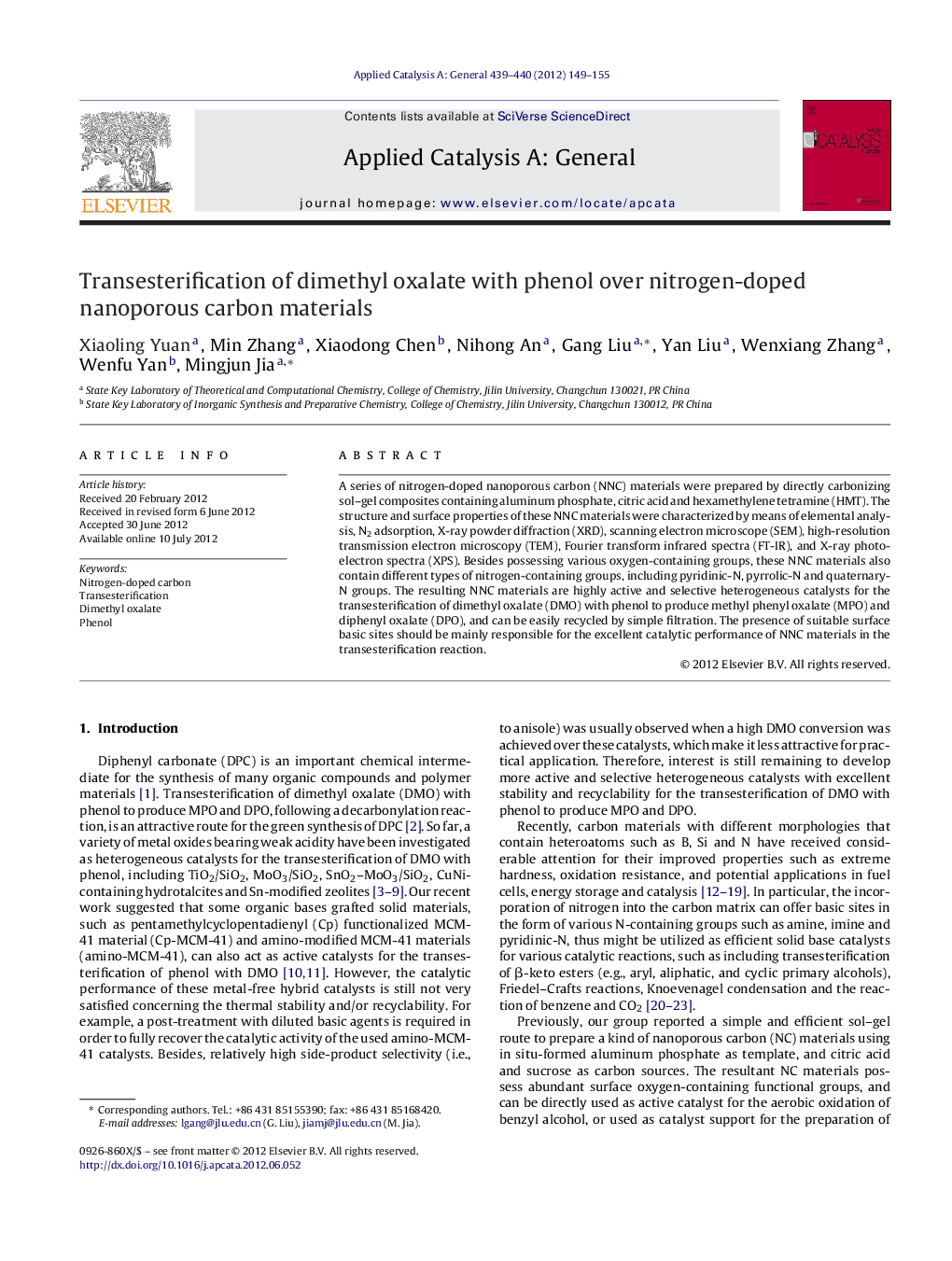| Article ID | Journal | Published Year | Pages | File Type |
|---|---|---|---|---|
| 40655 | Applied Catalysis A: General | 2012 | 7 Pages |
A series of nitrogen-doped nanoporous carbon (NNC) materials were prepared by directly carbonizing sol–gel composites containing aluminum phosphate, citric acid and hexamethylene tetramine (HMT). The structure and surface properties of these NNC materials were characterized by means of elemental analysis, N2 adsorption, X-ray powder diffraction (XRD), scanning electron microscope (SEM), high-resolution transmission electron microscopy (TEM), Fourier transform infrared spectra (FT-IR), and X-ray photoelectron spectra (XPS). Besides possessing various oxygen-containing groups, these NNC materials also contain different types of nitrogen-containing groups, including pyridinic-N, pyrrolic-N and quaternary-N groups. The resulting NNC materials are highly active and selective heterogeneous catalysts for the transesterification of dimethyl oxalate (DMO) with phenol to produce methyl phenyl oxalate (MPO) and diphenyl oxalate (DPO), and can be easily recycled by simple filtration. The presence of suitable surface basic sites should be mainly responsible for the excellent catalytic performance of NNC materials in the transesterification reaction.
Graphical abstractFigure optionsDownload full-size imageDownload high-quality image (129 K)Download as PowerPoint slideHighlights► Nitrogen-doped nanoporous carbon (NNC) materials were prepared by sol–gel route. ► NCC catalysts are active for transesterification of dimethyl oxalate with phenol. ► There are large amount of nitrogen-containing groups on the surface of NNC. ► Nitrogen-containing groups are main active centers for transesterification reaction.
